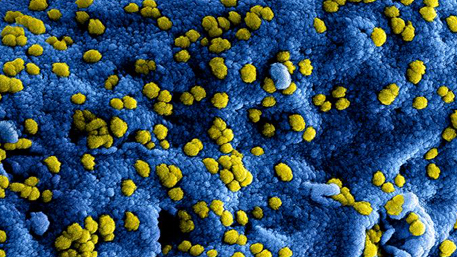
Rogue Antibodies and Gene Mutations Explain Some Cases of Severe COVID-19
F Collins, NIH Director's Blog, October 6, 2020
F Collins, NIH Director's Blog, October 6, 2020

A perplexing issue with COVID-19 is that it affects people so differently. Researchers are trying to explain why some folks bounce right back from the virus, or don’t even know they have it—while others become critically ill. Two studies suggest that one reason may be previously unknown trouble spots in the immune systems, which hamper ability to fight the virus.
Risk estimation of SARS-CoV-2 transmission from bluetooth low energy measurements
F Sattler et al, NPJ Digital Medicine, October 6, 2020
F Sattler et al, NPJ Digital Medicine, October 6, 2020
Digital contact tracing approaches based on Bluetooth low energy (BLE) have the potential to efficiently contain and delay outbreaks of infectious diseases We propose a machine learning based approach to reliably detect subjects that have spent enough time in close proximity to be at risk of being infected. Our study is an important proof of concept to slow down the rapid spread of COVID-19.
A validated, real-time prediction model for favorable outcomes in hospitalized COVID-19 patients
N Razavian et al, NPJ Digital Medicine, October 6, 2020
N Razavian et al, NPJ Digital Medicine, October 6, 2020
We use 3345 retrospective and 474 prospective hospitalizations to develop and validate a parsimonious model to identify patients with favorable outcomes within 96?h of a prediction, based on real-time lab values, vital signs, and oxygen support variables. In retrospective and prospective validation, the model achieves high average precision (88.6% 95% CI: [88.4–88.7] and 90.8% [90.8–90.8]) and discrimination (95.1% [95.1–95.2] and 86.8% [86.8–86.9]) respectively.
Airborne transmission of SARS-CoV-2
KA Prather et al, Science, October 5 2020
KA Prather et al, Science, October 5 2020
There is an urgent need to harmonize discussions about modes of virus transmission to ensure the most effective control strategies. To do so, we must clarify the terminology to distinguish between aerosols and droplets using a size threshold that can more effectively separate their aerodynamic behavior, ability to be inhaled, and efficacy of interventions.
Detection of COVID-19 from Chest Computed Tomography (CT) images using Deep learning: Comparing COGNEX VisionPro Deep Learning 1.0 Software with Open Source Convolutional Neural Networks
A Sarkar et al, ARXIV, October 1, 2020
A Sarkar et al, ARXIV, October 1, 2020
COVID-19 Classification of X-ray Images Using Deep Neural Networks
E Goldstein et al, ARXIV, October 3, 2020
E Goldstein et al, ARXIV, October 3, 2020
Metabolic programs define dysfunctional immune responses in severe COVID-19 patients
E Thomson et al, MEDRXIV, October 5, 2020
E Thomson et al, MEDRXIV, October 5, 2020
Pooled Saliva Specimens for SARS-CoV-2 Testing
B Barat et al, MEDRXIV, October 5, 2020
B Barat et al, MEDRXIV, October 5, 2020






















.png)











No hay comentarios:
Publicar un comentario